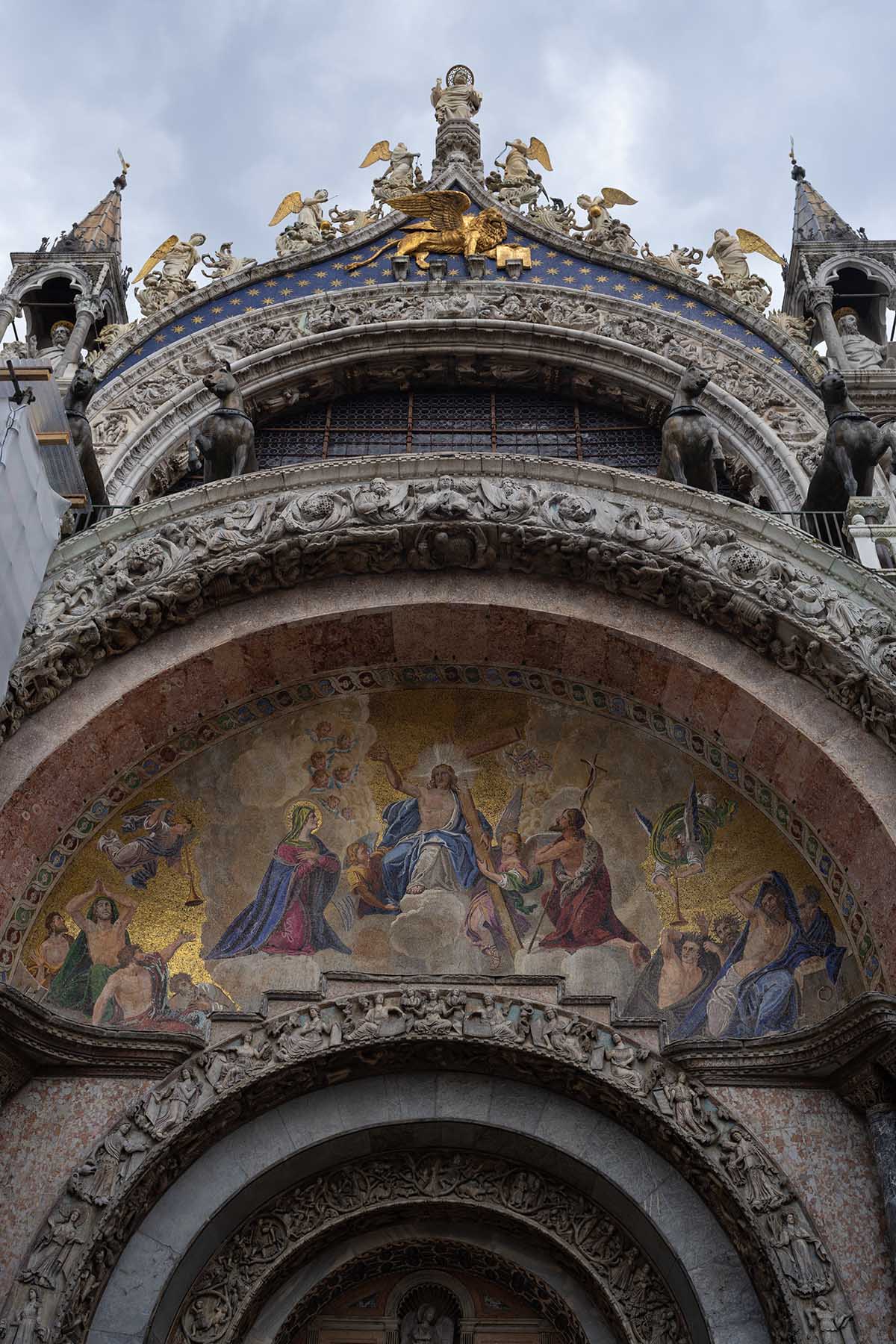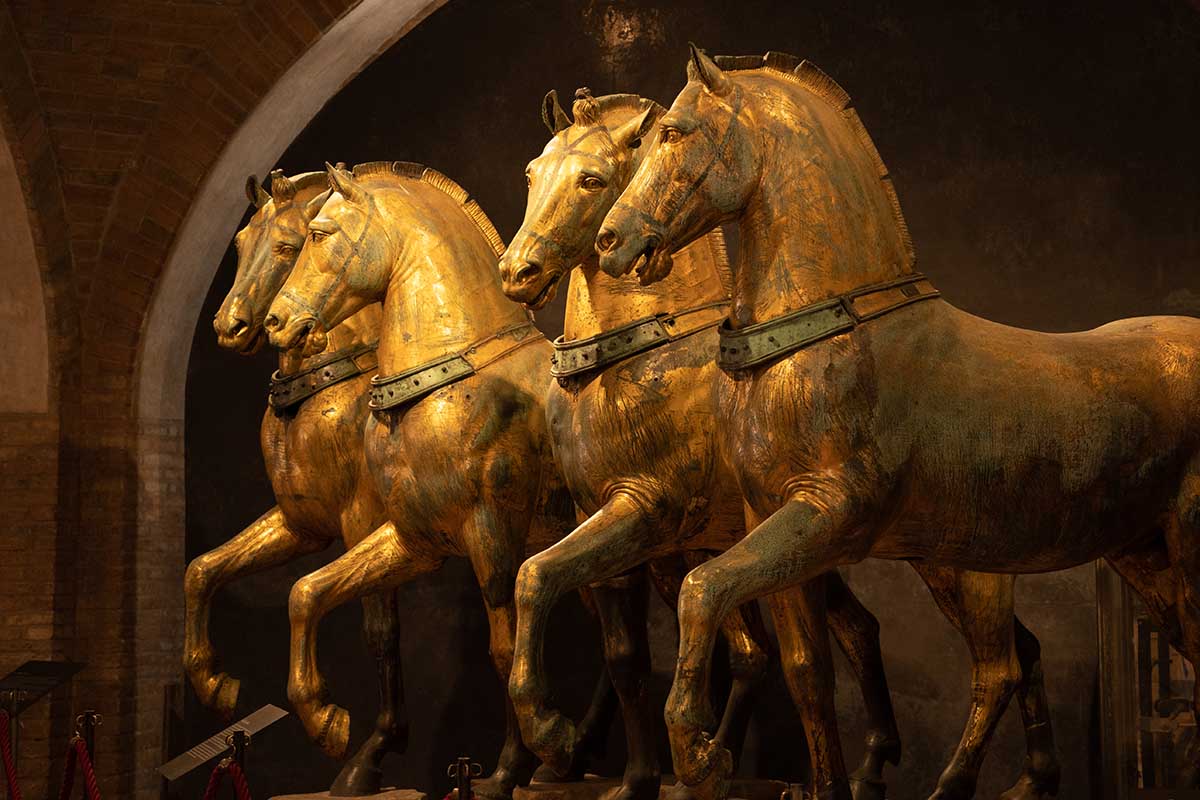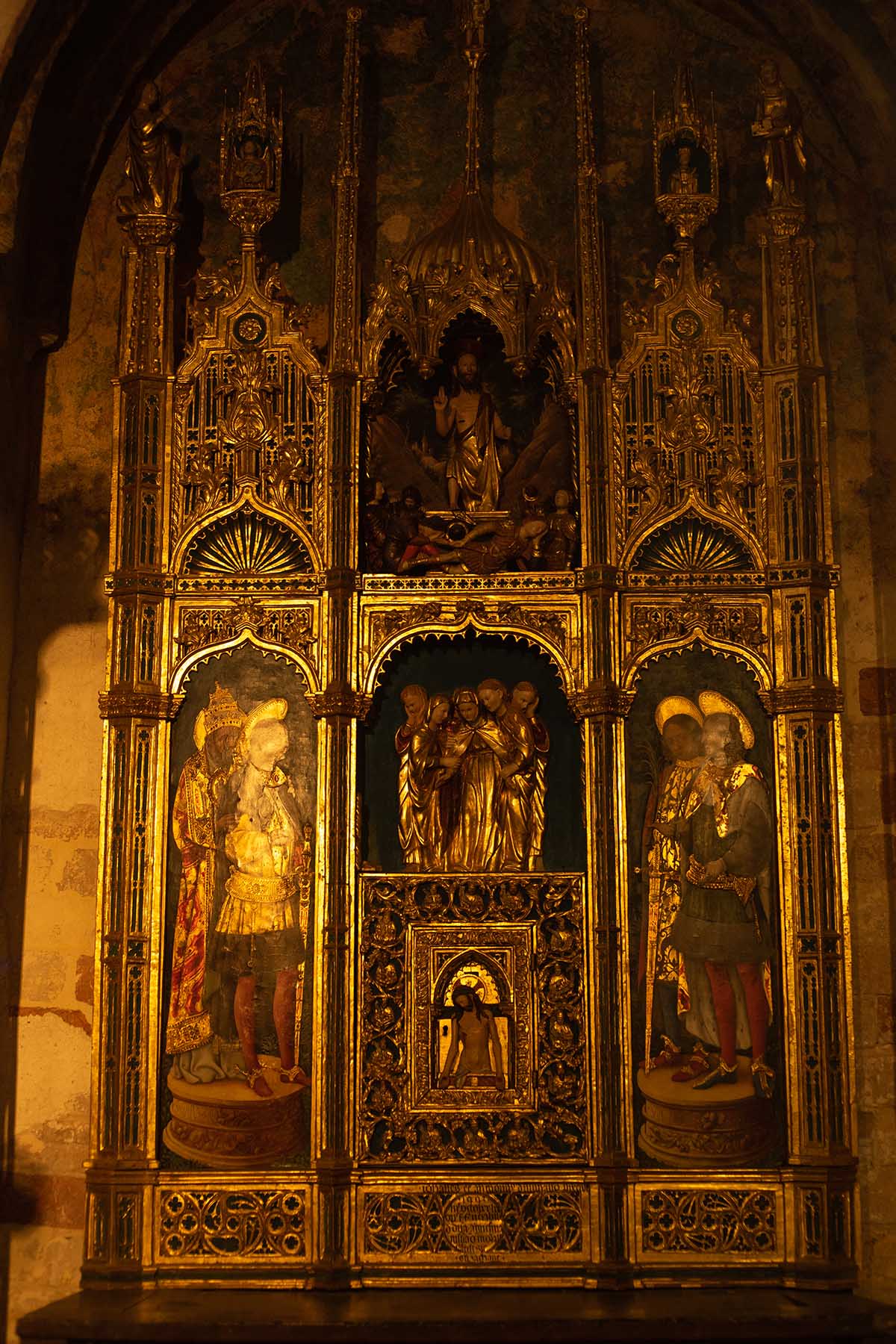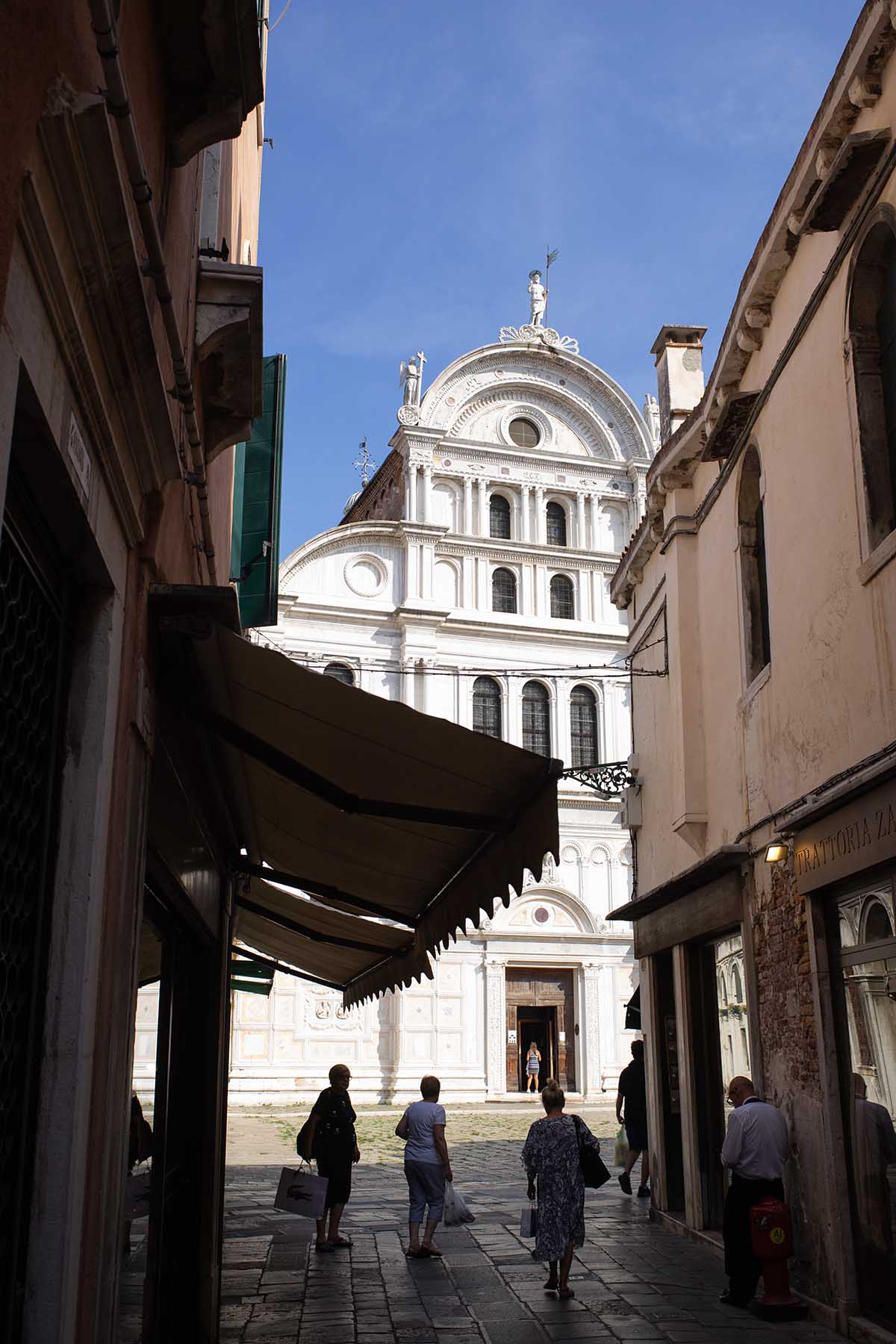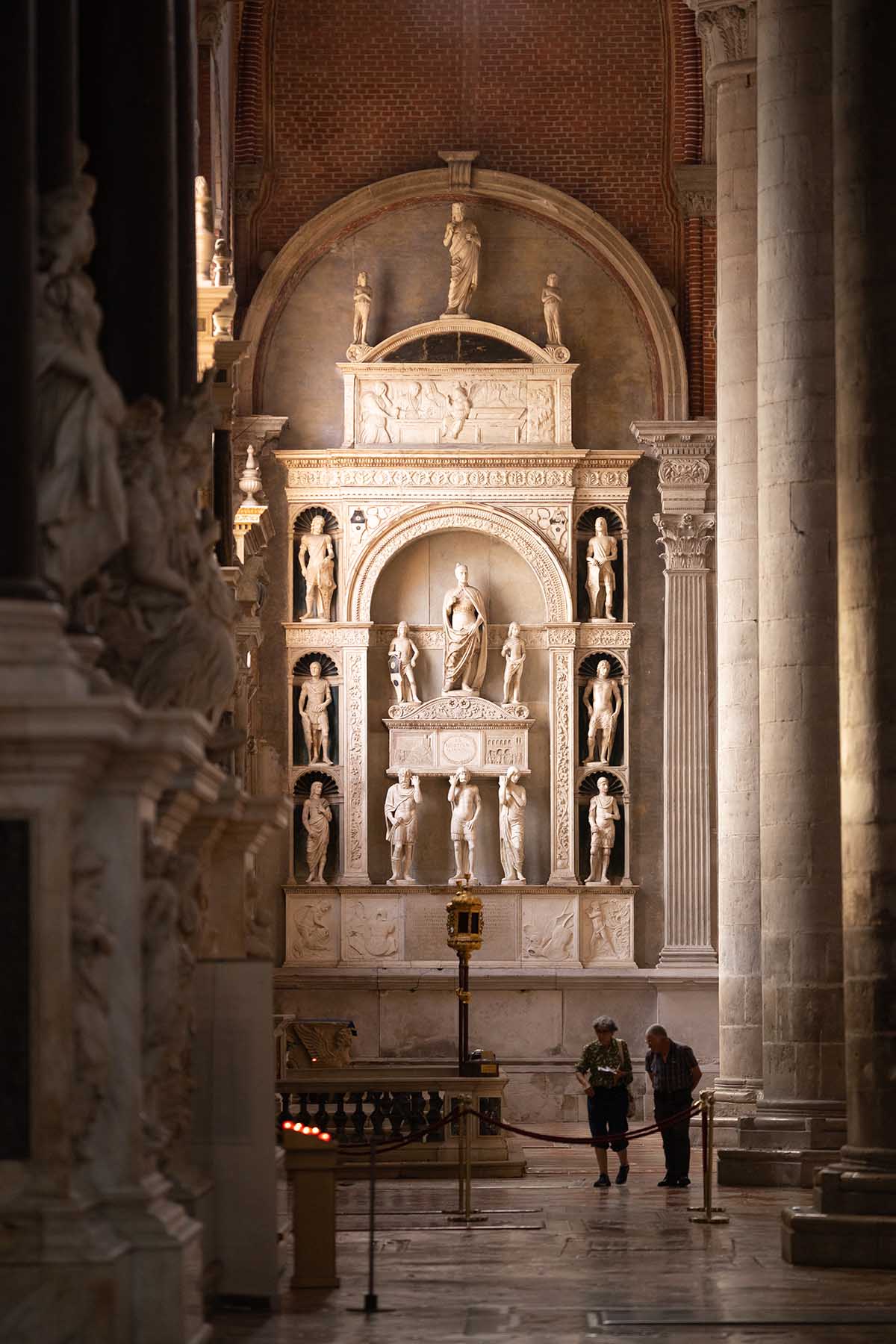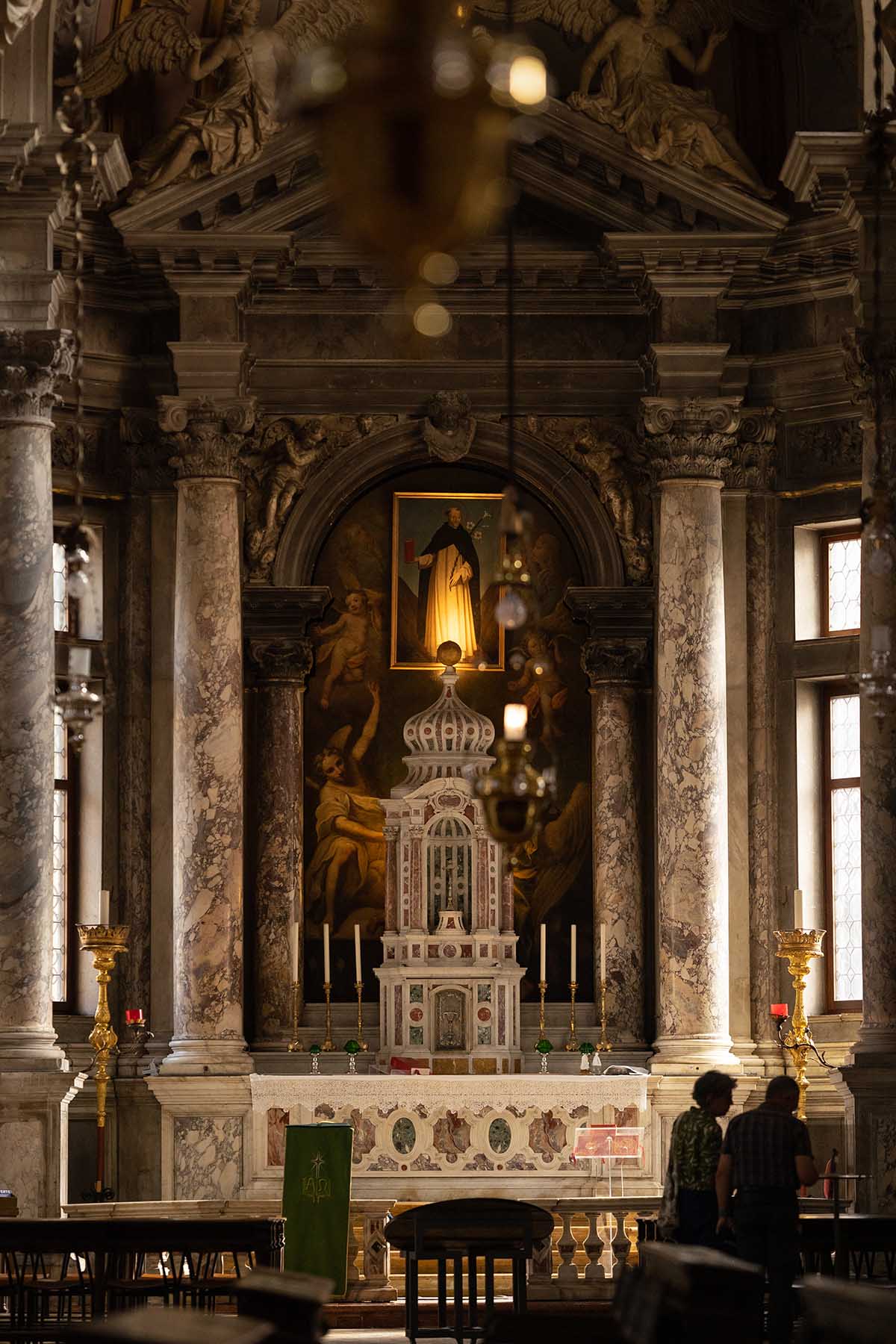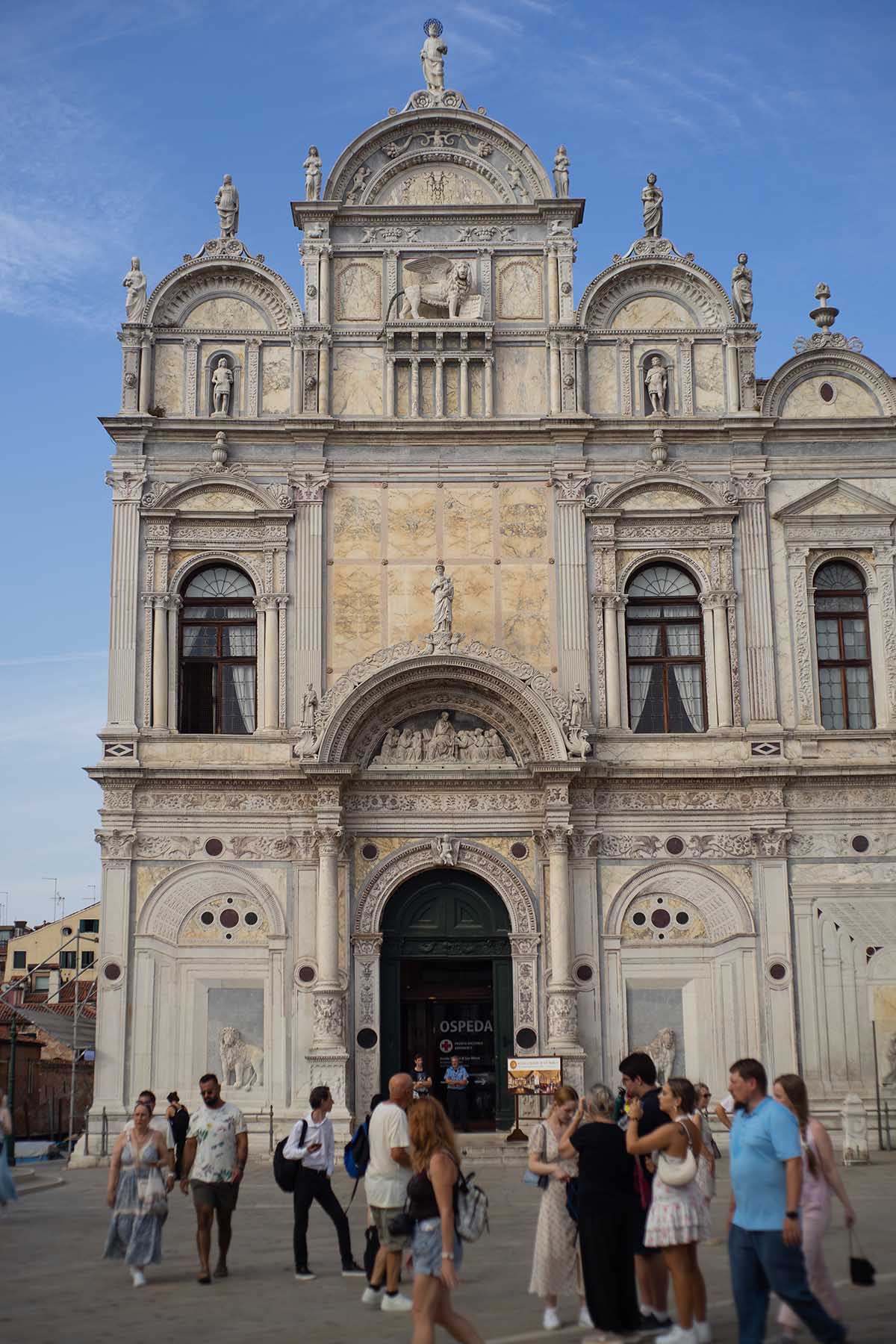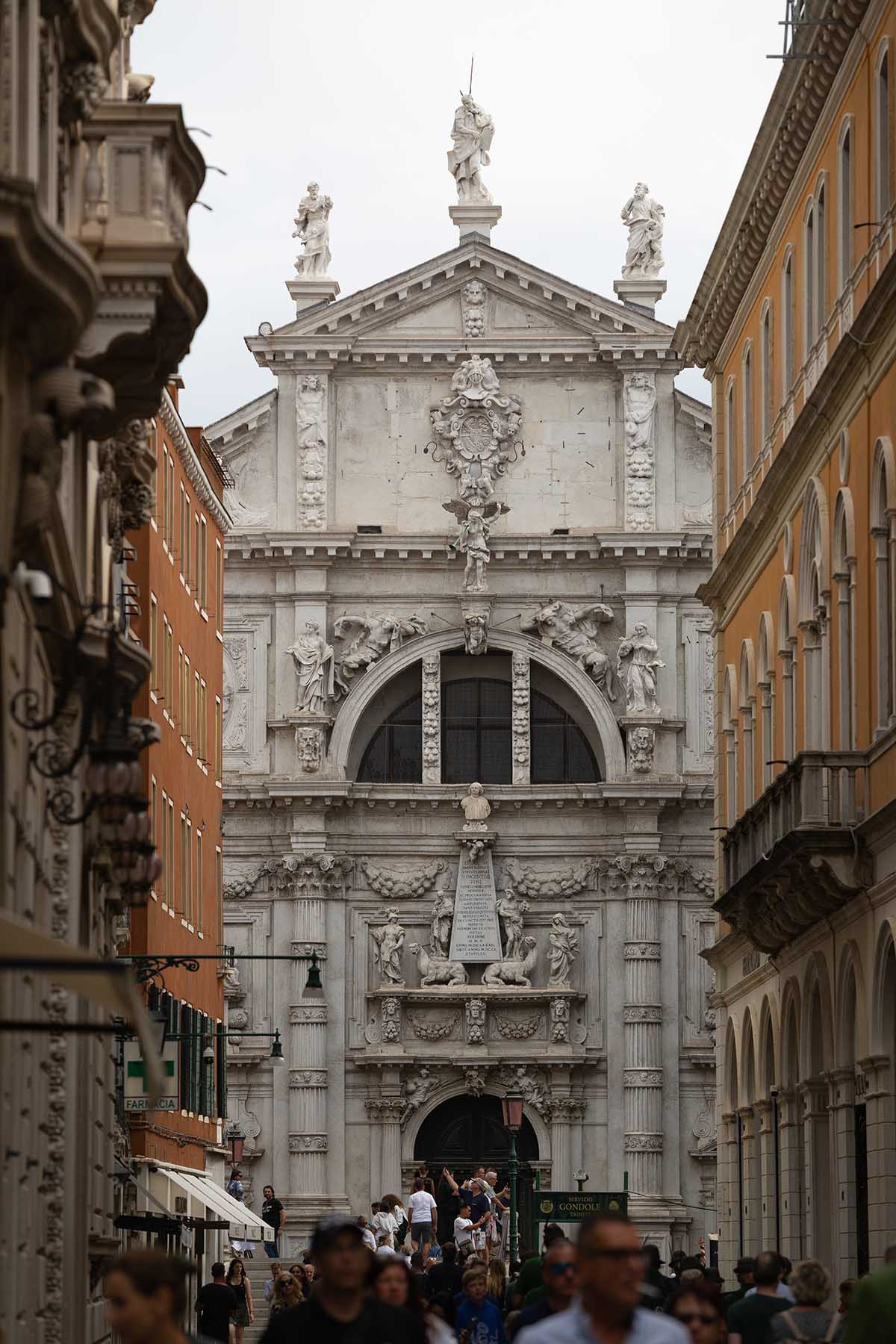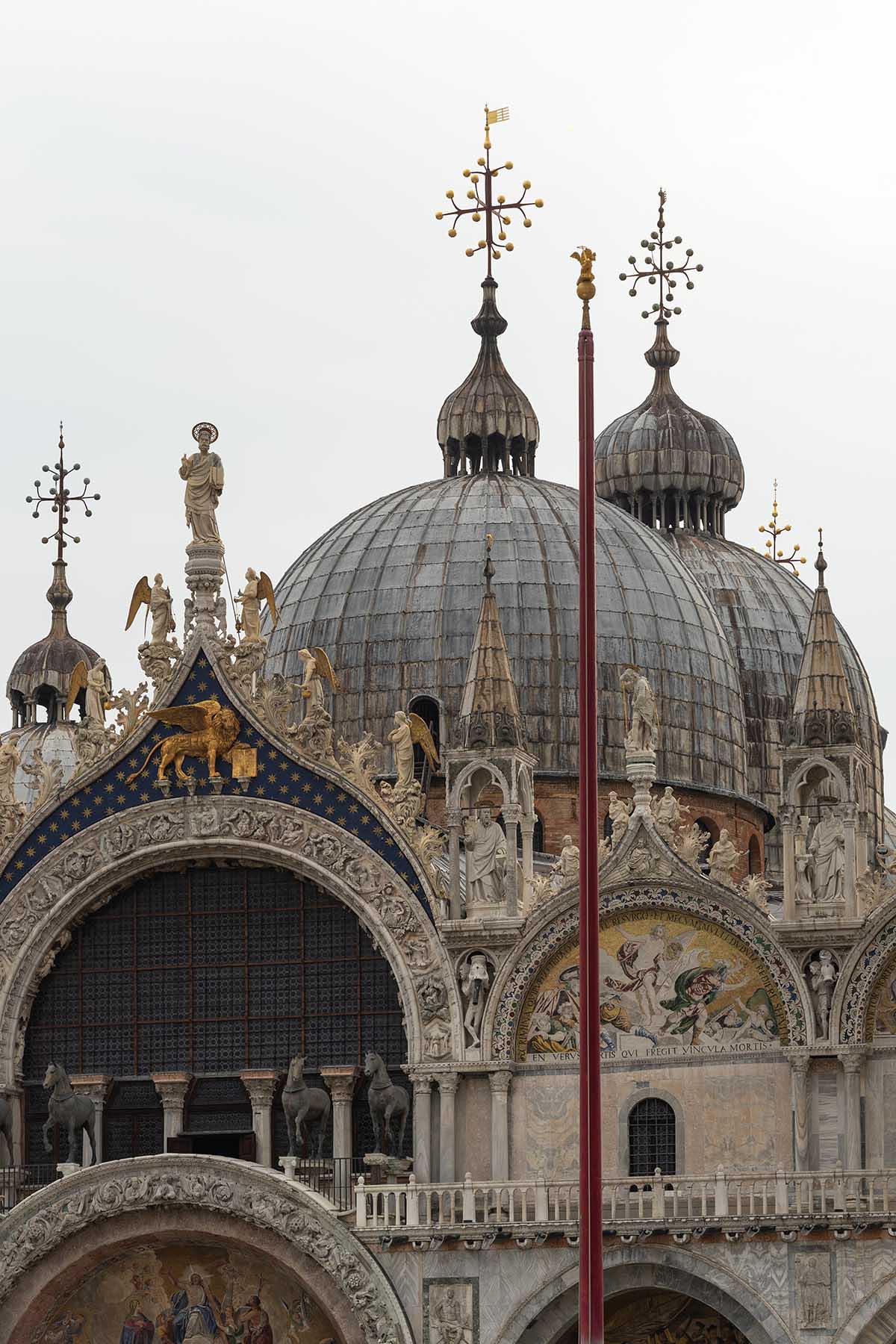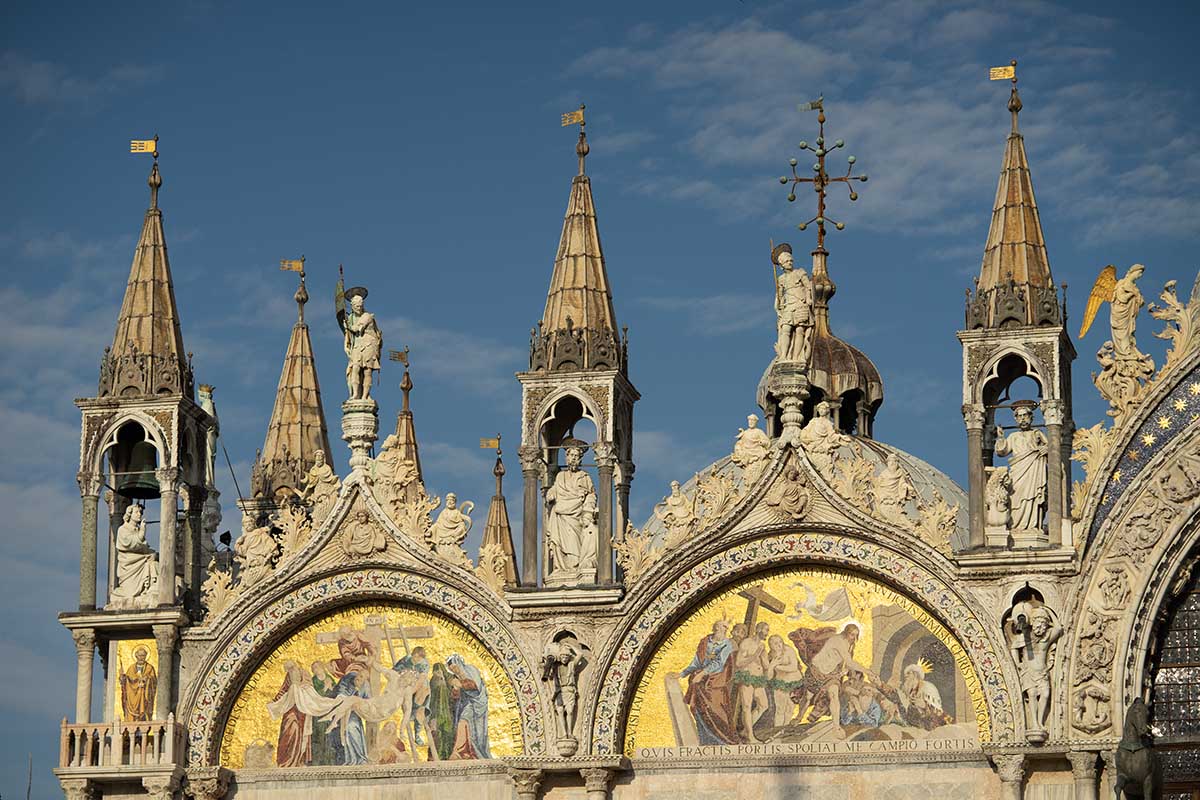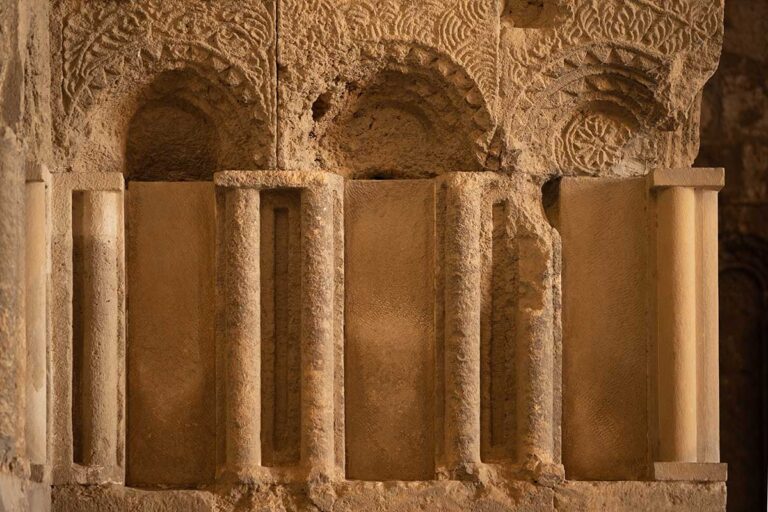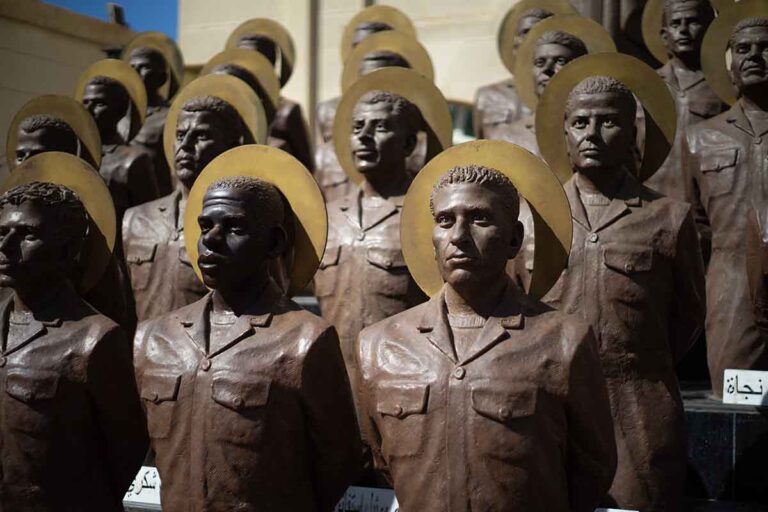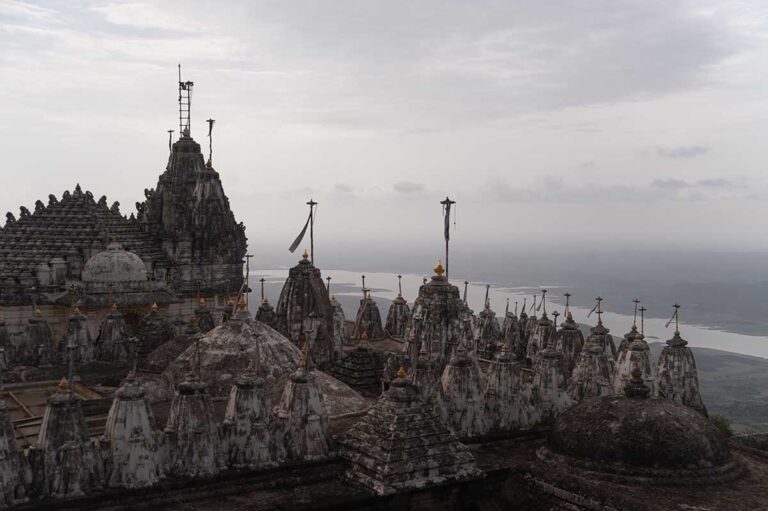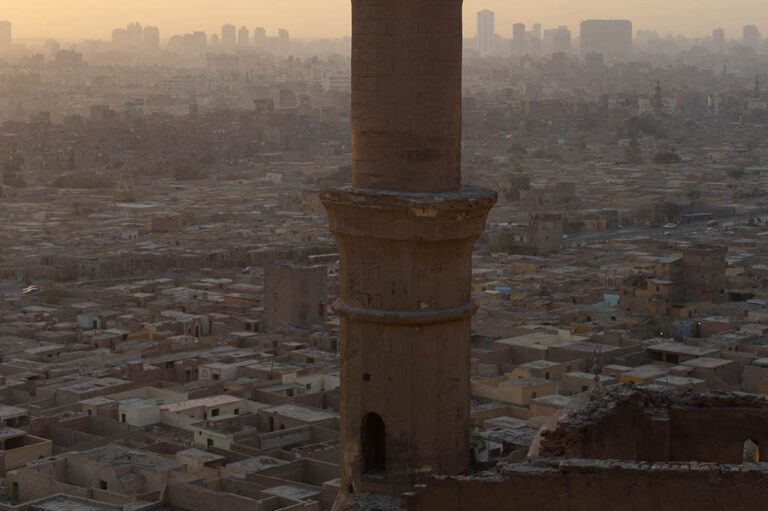
The ‘skip-the-line’ line looked a little bit longer than the regular line outside Saint Mark’s Cathedral in Venice. When the time on my ticket arrived, the threads of tourists snaked into Piazza San Marco, where puddles of rainwater were pooling, a downpour underway. Perfectly timed for my booking, the storm that had gathered all morning had just now broken, as had the umbrella I’d bought for €5 nearby, almost as soon as I’d opened it, flattening hopes of staying relatively dry. I scrambled to jig the plastic deformity into shape as the wind turned sideways, making it even more useless and silly, rain gushing in from all sides. Brooding over the piazza ahead, the cathedral’s dazzling portal felt ages away.
Some fled their lines, even owners of far better umbrellas, but I was going to hang on: the one chance I had on this particular visit to glimpse the inside of San Marco. It would be my first time. Midway through a guidebook commission, I was only somewhat aware of the treasures that awaited.
Saint Mark’s Square
Disgracefully, without excuse, on previous visits I’d been fine to admire the Basilica di San Marco, Venice’s jewel, from afar, strolling the vast Piazza San Marco. I was plenty entranced by the gem-studded, marble exterior of the cathedral, its riotous mashup up of styles, strangely irregular domes and mysterious horses, anciently crafted, perched outside on a ledge high over the crowds below.
On a typical day, many hundreds of tourists are content to do as I’d done then: lounge in one of the numerous overpriced cafes that line the timeworn square—the settings of dramas untold: executions, ducal pronouncements, failed revolutions—aimed at toppling the state which yet survived 1100 years (697–1797): La Serenissima, the Most Serene Republic. Napoleon, who finally succeeded in ending this span, is said to have said that the grand piazza is ‘the finest drawing room in Europe.’ A fair remark (on a nice, sunny day).
Of the piazza’s subsequent drama, nature has played a genuine part, not least in the historic flooding of 1966, submerging the piazza in more than a meter of water from the lagoon. The incident sounded the alarm that led to the construction of MOSE, a series of mobile gates now in place. Completed and (successfully) tested in 2025, it now protects the city from a steep surge in occurrences of acqua alta (high water). These would-be crises are always first noticed here at Venice’s lowest point: Piazza San Marco.
As rain pounded down on the merging puddles in the square at the time of my skip-the-line booking, I wondered about MOSE, but was far more concerned with the camera and lens wrapped in t-shirts inside of my tote bag (backpacks aren’t allowed). I pulled what was left of my shoddy umbrella tight over my head, arching my body over the dripping bag and inching forward for what felt like much, much more than what was likely maybe five or ten minutes in the rain.

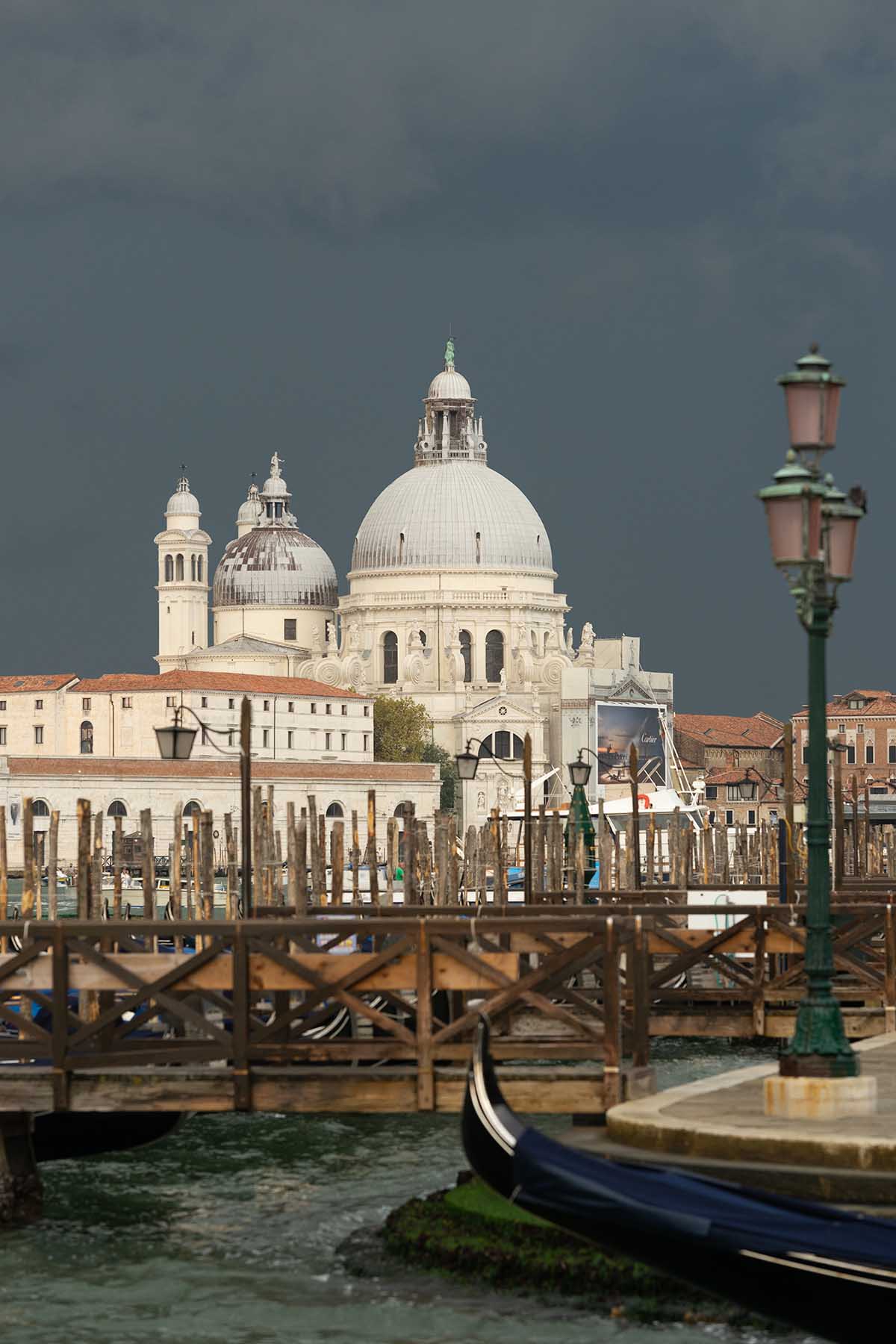
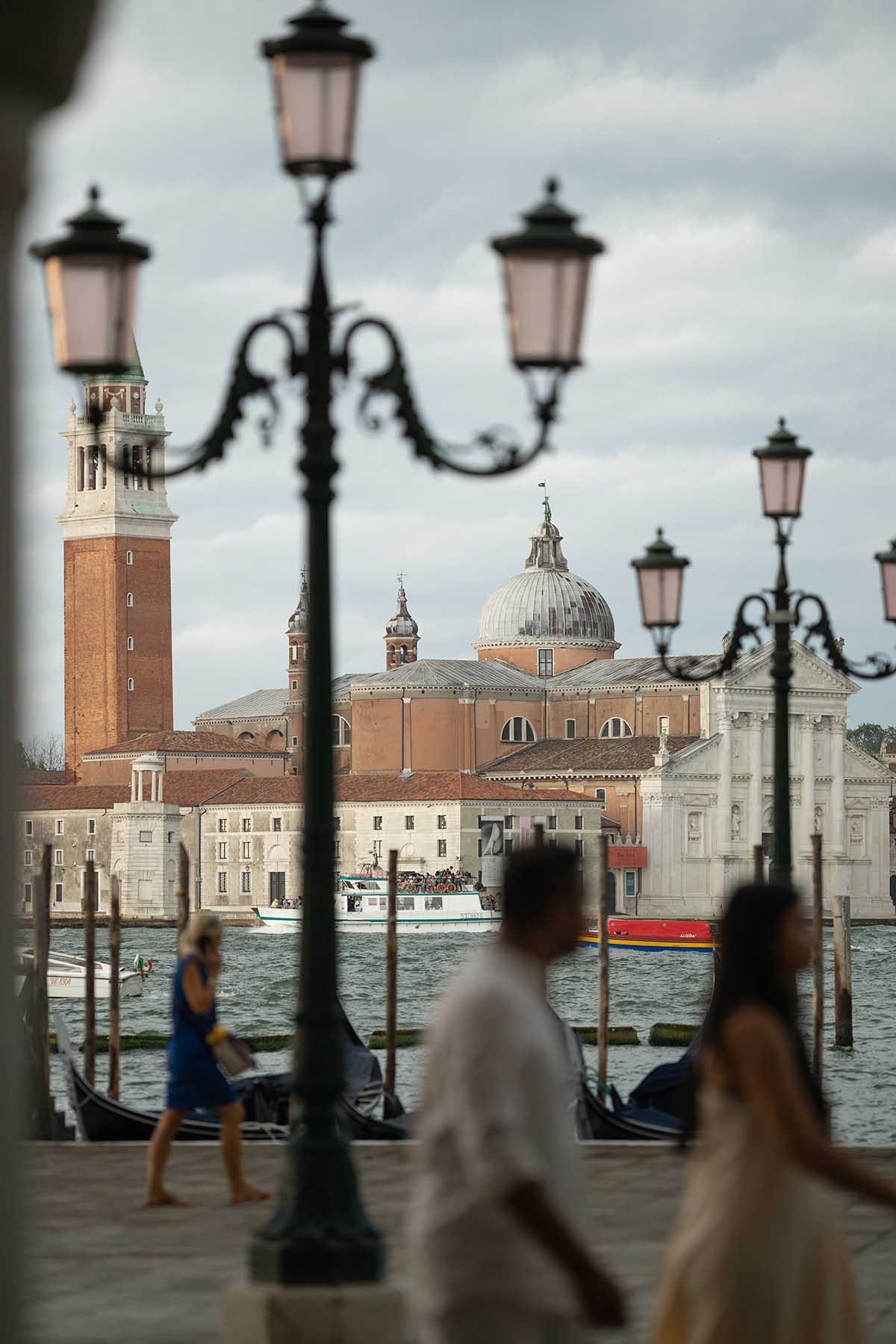
Stepping into the Narthex
Though nothing else was, my camera and phone, miraculously, were dry when I cleared the shower’s reach, sloshing into the warmth and stillness of Saint Mark’s to scan with dripping fingers the barcode on my phone. Then, very pleased with myself, I looked up, at once forgetting about being all soaked.
The mosaics of San Marco are sublime. Neck craned in the narthex, I admired the Dome of the Creation, lush with scenes from the Garden of Eden. Moving along with the solemn crowd, I then circled the high altar, slowly, joining the crush at the famous Byzantine Pala d’Oro (Golden Panel), first commissioned in the late 900s but greatly embellished with later loot from Constantinople.
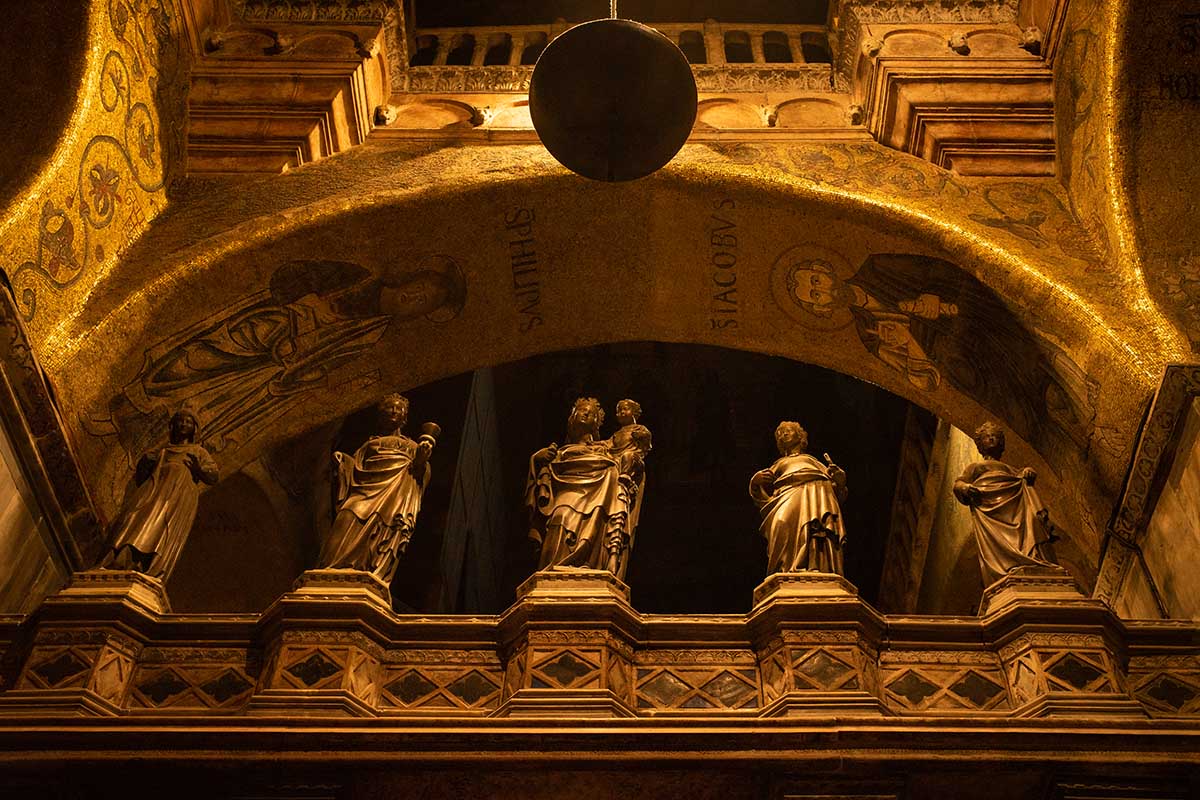
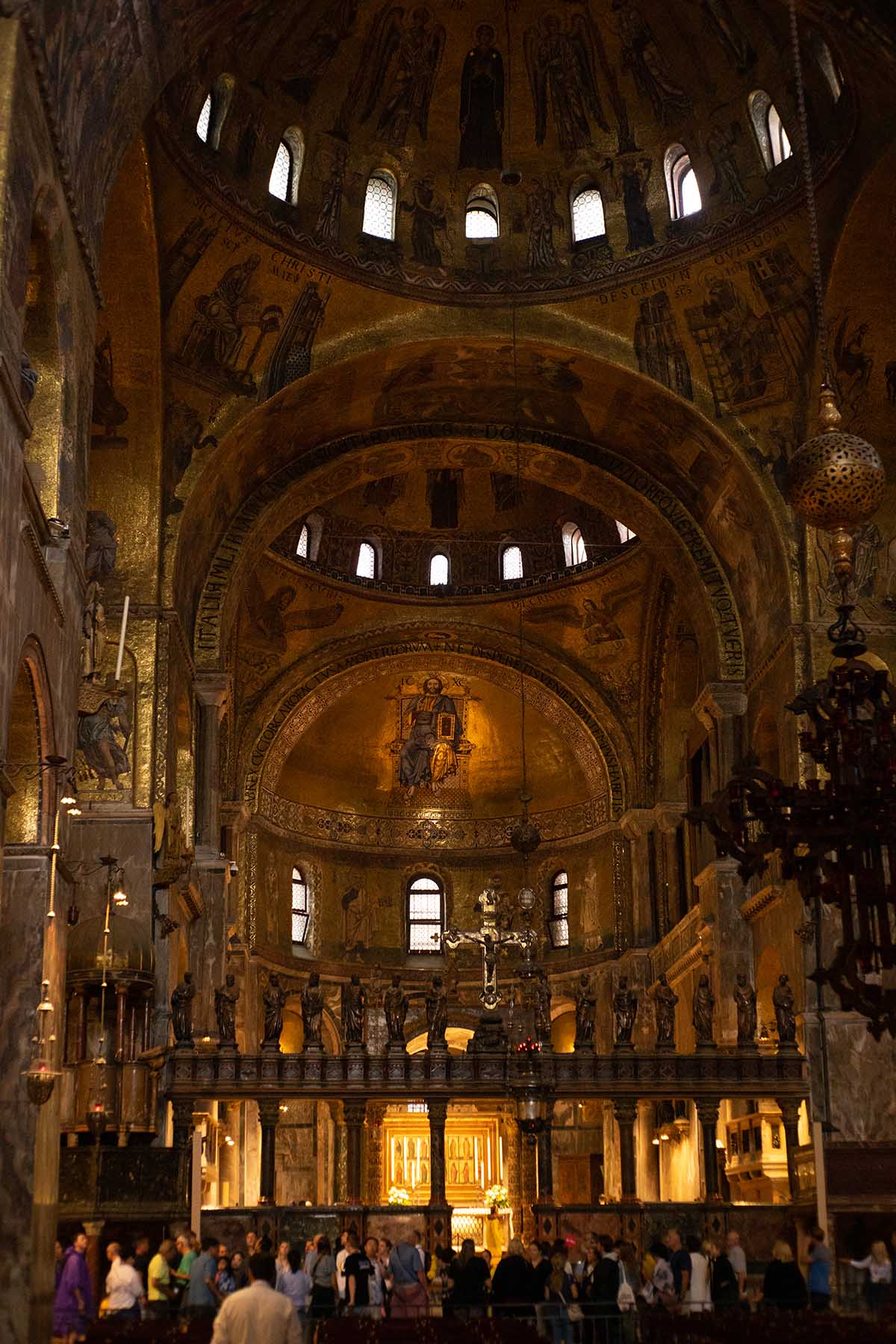
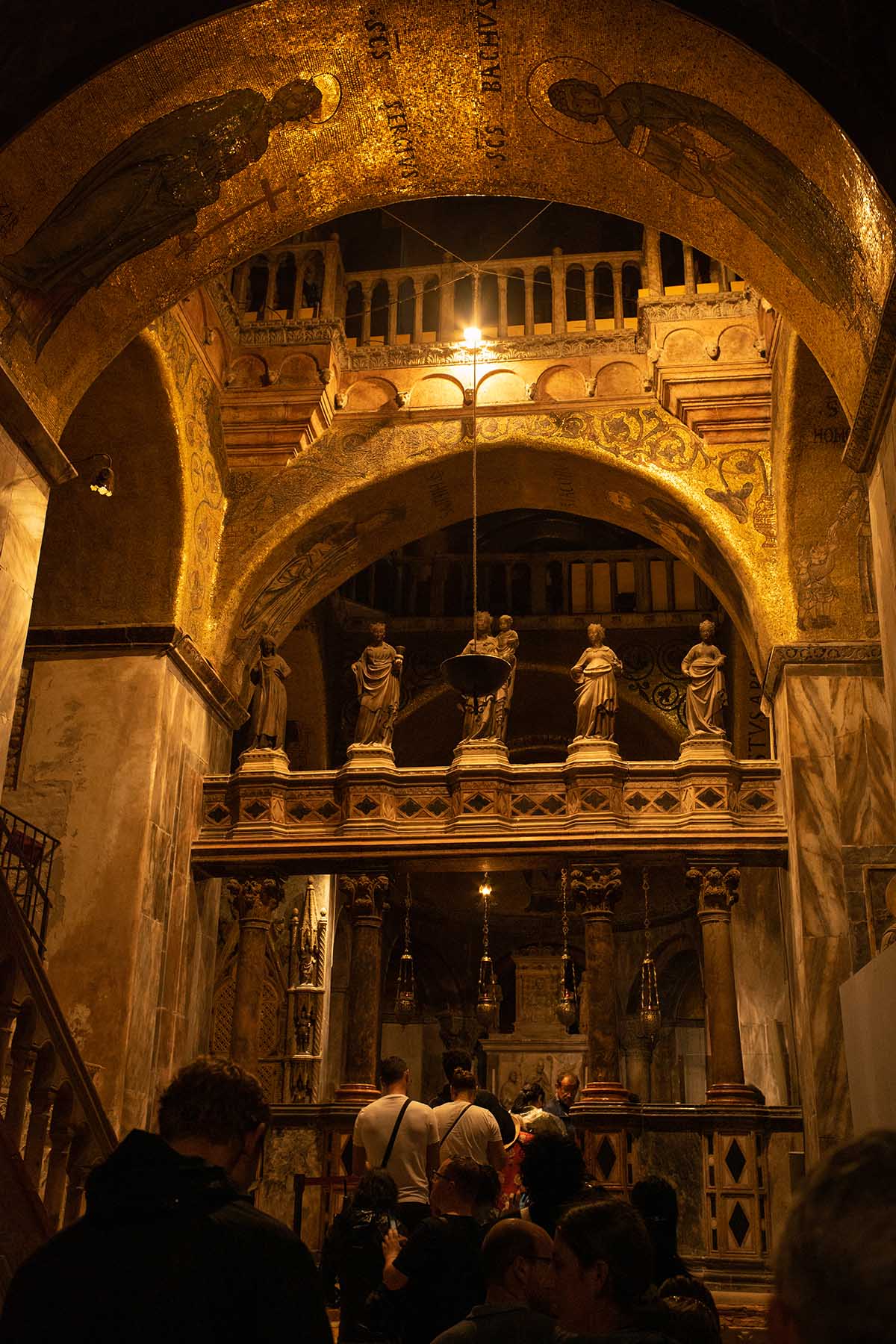
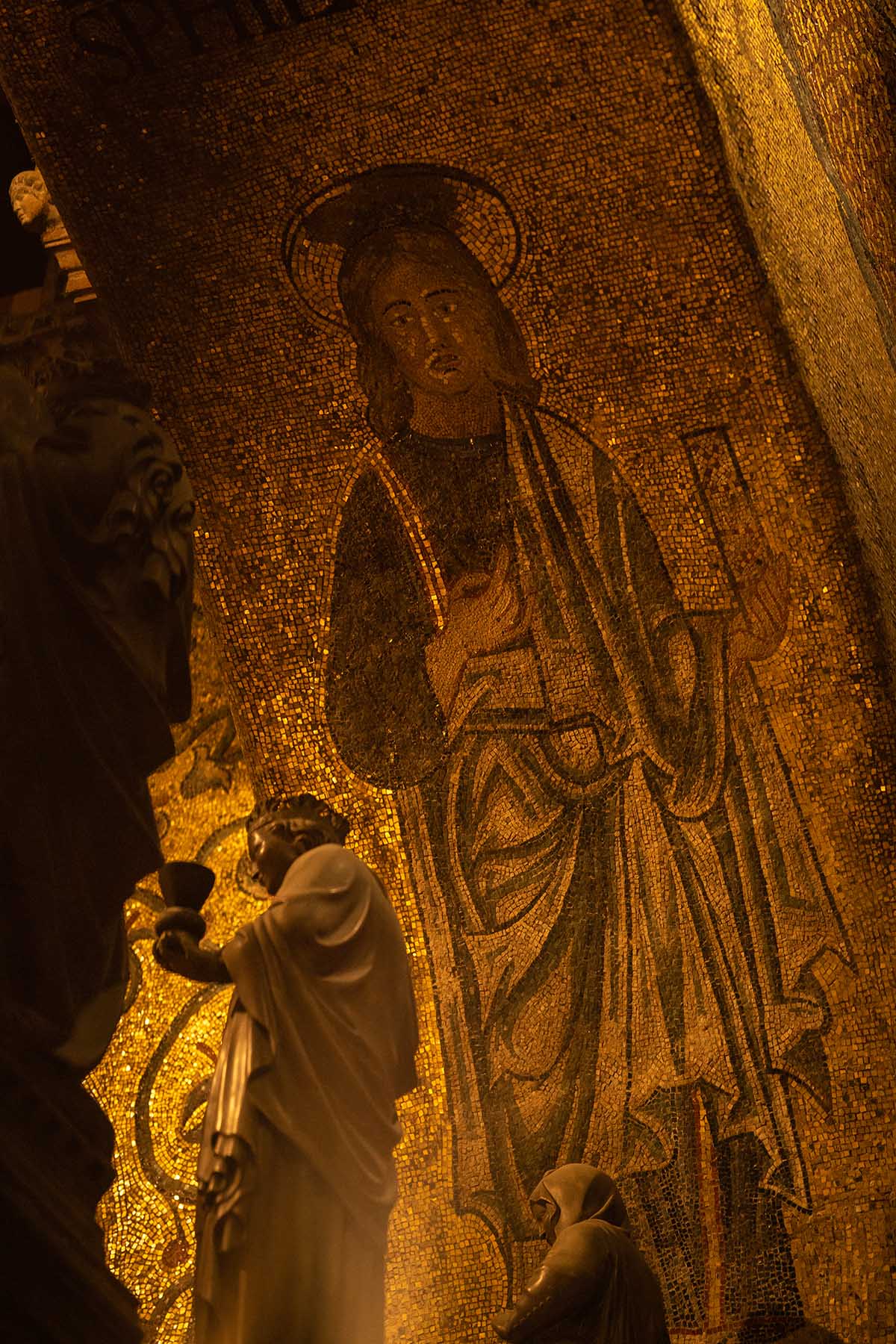

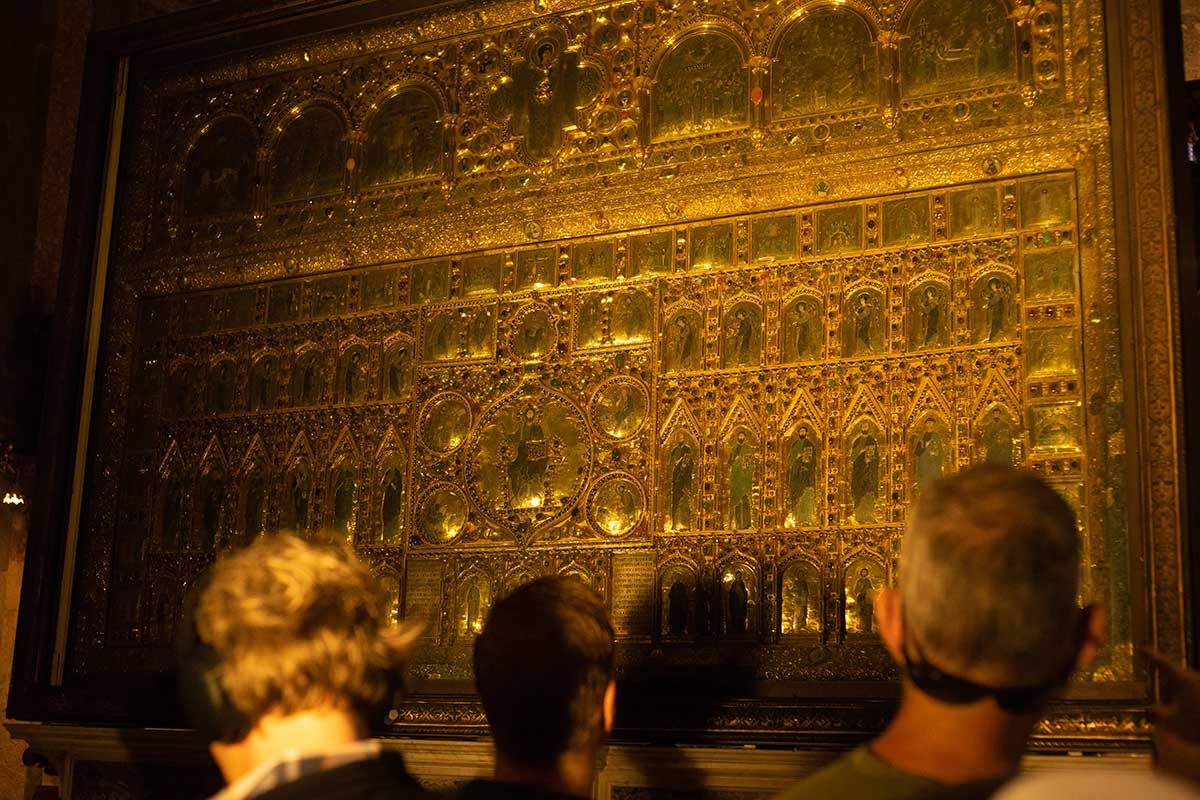

Venice’s Rise
From humble beginnings as a rough, island refuge from the armies ravaging the mainland in the wake of the collapse of Rome, Venetians rose gradually over centuries through ingenuity and grit. First a Byzantine satellite, its doges accumulated power and prestige, notably through a 9th-century, Alexandrian heist.
Under the noses of the Arab authorities, the Venetian hero-thieves made off with the remains of Saint Mark the Evangelist, credited for the spread of Christianity up the Nile. According to the story, they hid the loot under a hunk of pork to evade inspection. These events, as well as the body’s subsequent interment here, are all depicted on the golden lunettes over the doorways outside.
Their prize brought great prestige to Venice, but a fire in 976 destroyed the entire cathedral, leaving very little doubt that Mark’s relics were gone, lost for good. During reconstruction in 1094, however, they were reported as having miraculously reappeared, supposedly hidden inside a pillar, reaffirming the saint’s presence in Venice and the republic’s divine favor moving forward. The upswing continued over the next several centuries, in which Venice outpaced its Adriatic rivals, becoming a power to be reckoned with as far as the eastern Mediterranean. While cashing in on trade with Muslim lands, they’d soon play an outsized role in waging the Crusades.
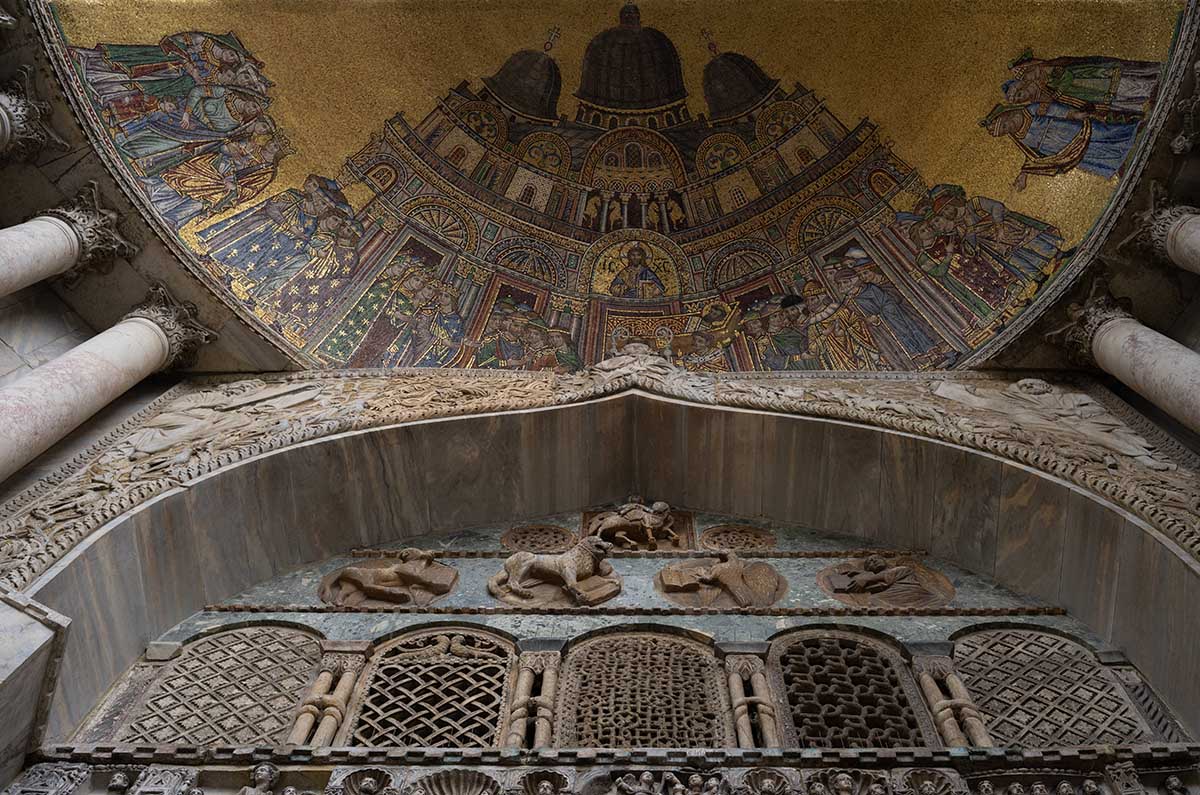
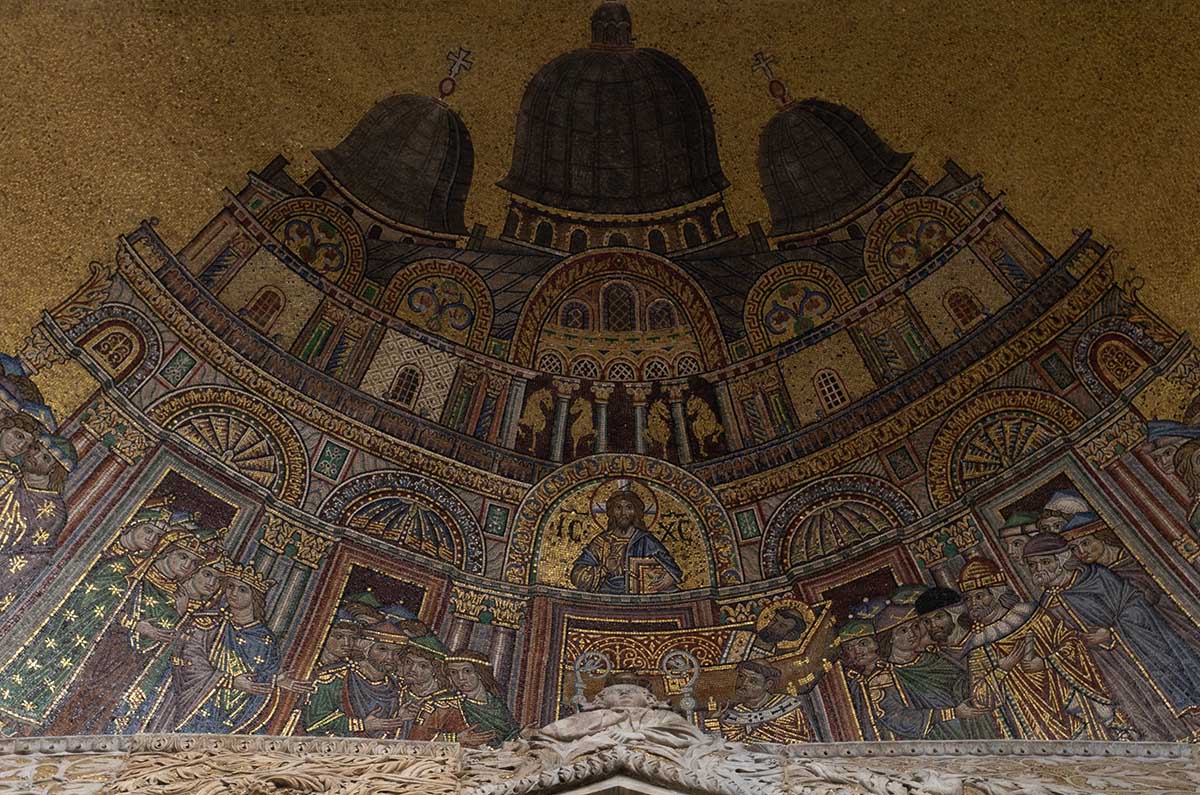

The Museo di San Marco & Enrico Dandolo’s Plunder
I felt half-dry by the time I squished up the narrow old stairway to find what I’d most wanted to see: San Marco’s Quadriga (Four Horses). At the top of the steps, the views from the gallery over the church’s nave certainly do not disappoint. Darkly shaded in the ethereal gloom all around, the gold-tinged mosaics—roughly 8,000 square meters, representing some 800 years of Venetian devotion, from the 11th century on—took me aback.
Of the scenes to unfold over the centuries in the space just below, one moment deserves recounting: when in 1201, Doge Enrico Dandolo addressed the Crusaders amassed in the candle-lit cathedral. Virtually blind and over 80 years old, yet fiercely intelligent and strong, his pronouncement was much awaited, arriving after long, restive months of frustrating delays to the launch of the Fourth Crusade, stymied by the need for ships (and a shortage of funds to pay for their Venetian builders).
Donning the cross of Crusaders himself, Dandolo announced to great rapture and much weeping, according to reports, that Venice would throw its full weight behind the venture. It would procure the ships. The Doge himself would fight, leading the charge. In return, the Frankish Crusaders agreed on an added pit-stop to capture the rebellious Zara (today’s Zadar), a detour forbidden by the Pope. However, this remained a secret to nearly all but the Doge.
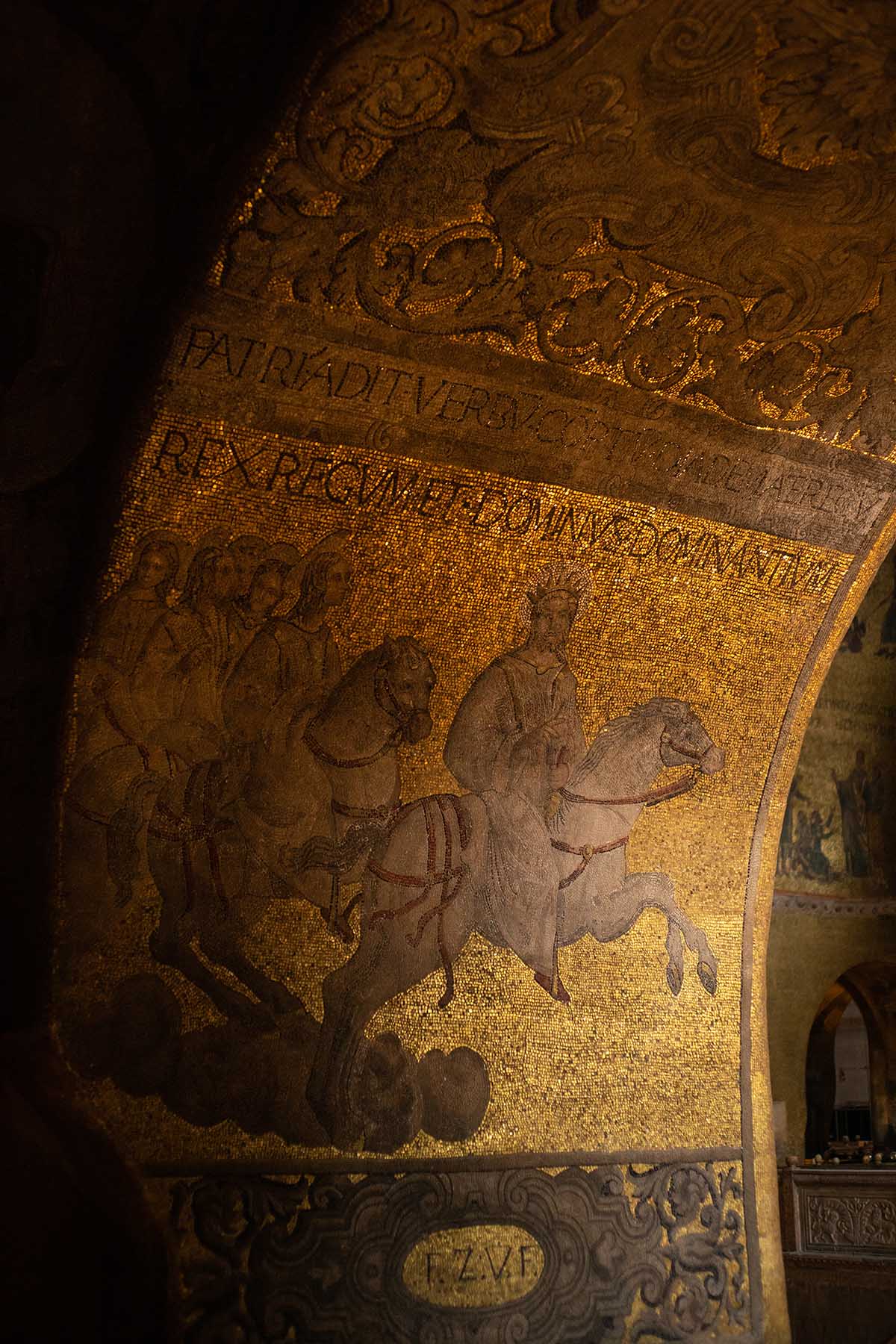
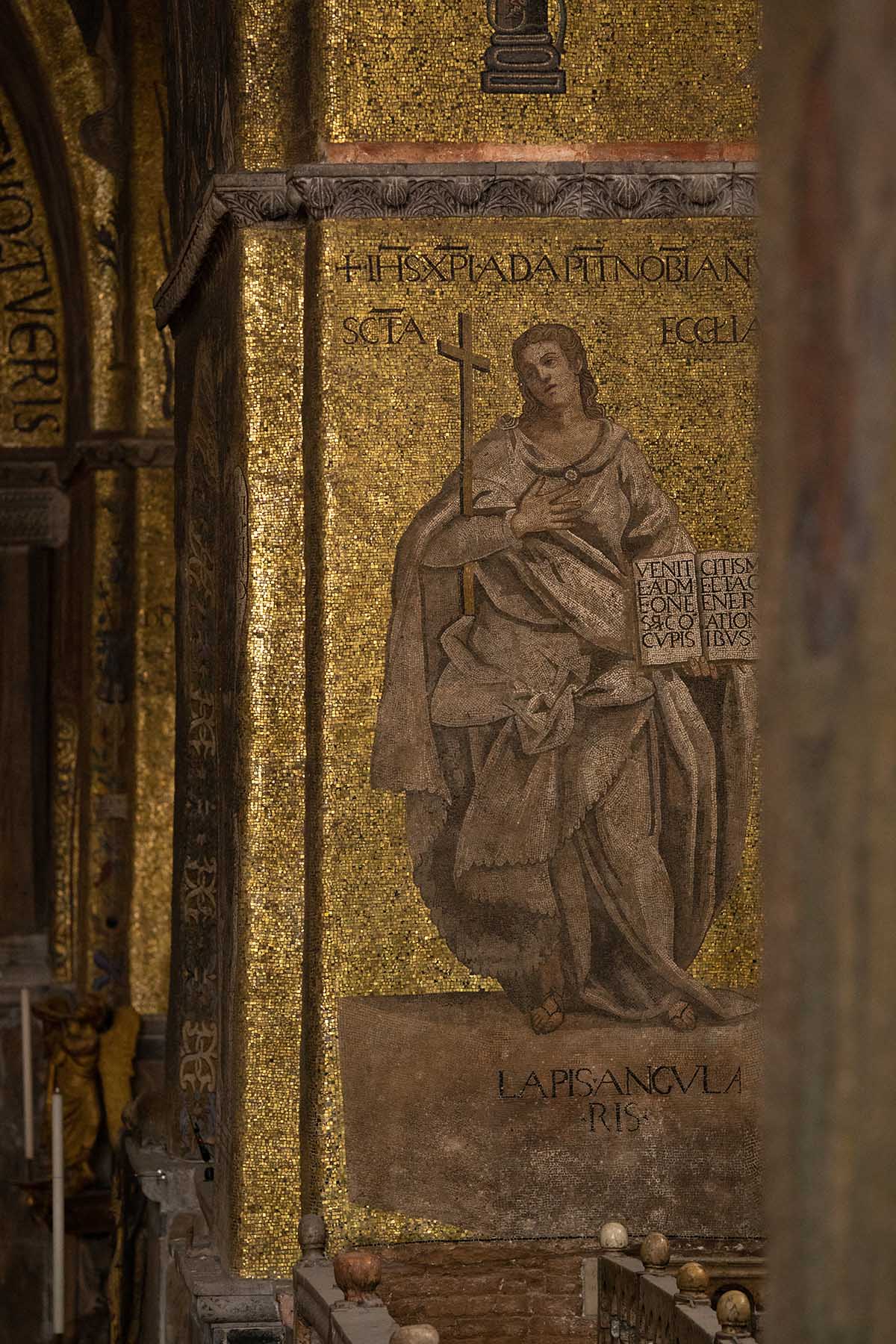
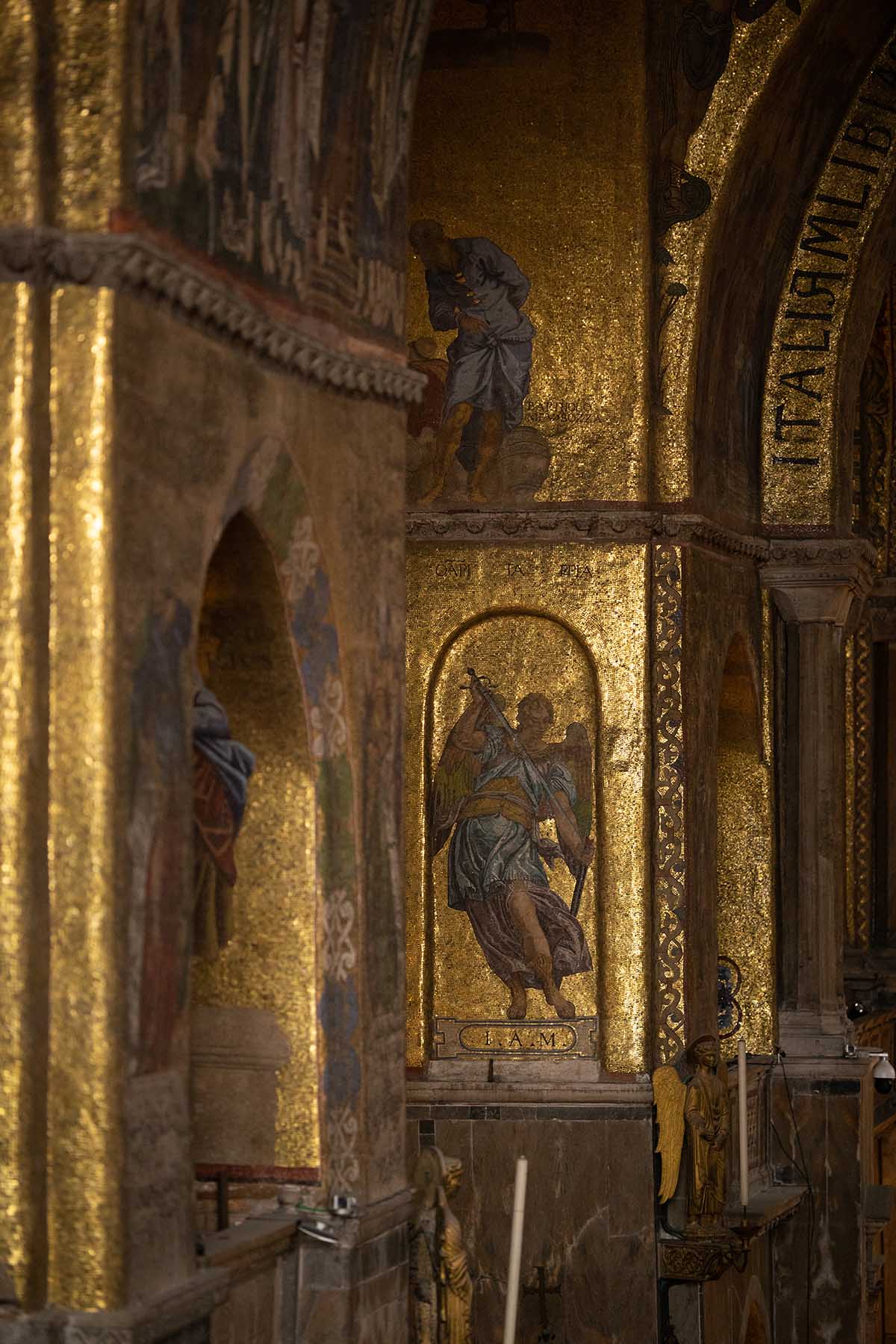
After capturing Zara, the Franks themselves came out with no small secret of their own: Jerusalem wasn’t their first destination. They too intended a diversion: to seize the Byzantine capital and place a pro-Western ruler on the throne. Incredibly, they succeeded, but the newly installed emperor, unable either to pay the Crusaders their dues or allay his citizens’ unrest, soon lost favor with both. Ousted by his general, the emperor was strangled to death. The usurper declared no payment would be forthcoming, then bolstered the city’s defenses.
This called for a second siege of the city, just a year after the first, one worthy of a Hollywood epic. The Venetian attack was initially repulsed from the walls of Constantinople, but the elderly doge single-handedly turned the tide, ordering his galley to double back. According to the accounts, he stood on the prow, fully armed with the banner of Saint Mark held aloft. The sight of the old doge sparked the courage of the Venetians and Franks. Though blind, he was the first on the beach, planting his banner as his army pitched ladders to scale the walls. In the brutal sack that followed this second siege, the Venetians went about their plunder with a selective eye, spotting the objects of greatest worth to pack into ships headed home. As for Enrico Dandolo, he remained in Constantinople, buried in the Hagia Sofia the next year.
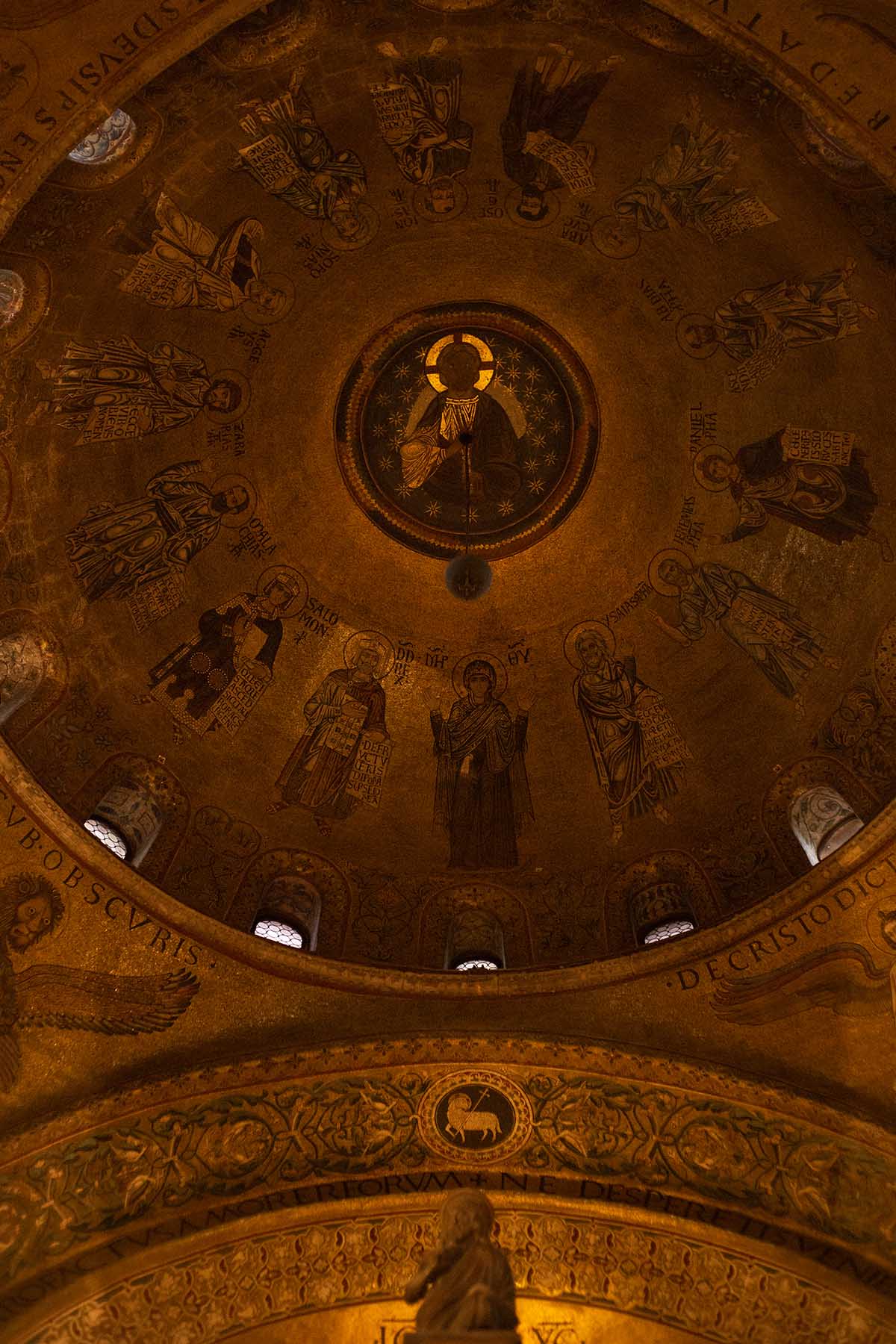


At Last: The Horses!
Around a corner in the upper gallery, the Museo di San Marco, I spotted the greatest of the spoils of the Fourth Crusade: the fabled Four Horses of Saint Mark, sculpted in the haze of antiquity (Greece? Rome?), placed over the Imperial Hippodrome of Constantinople for centuries until stolen to Venice in 1204.
A sign nearby explains that the many small scratches on their gold-leaf surface were made on purpose: to minimize the sun’s reflection; though it would seem more likely that it was because it was gold. But they hardly detract from the horses’ beauty, frozen in motion, a perfect, immortal tetrad. The craftsmanship appears superhuman. To glimpse them alone is well worth the €10 ticket upstairs.

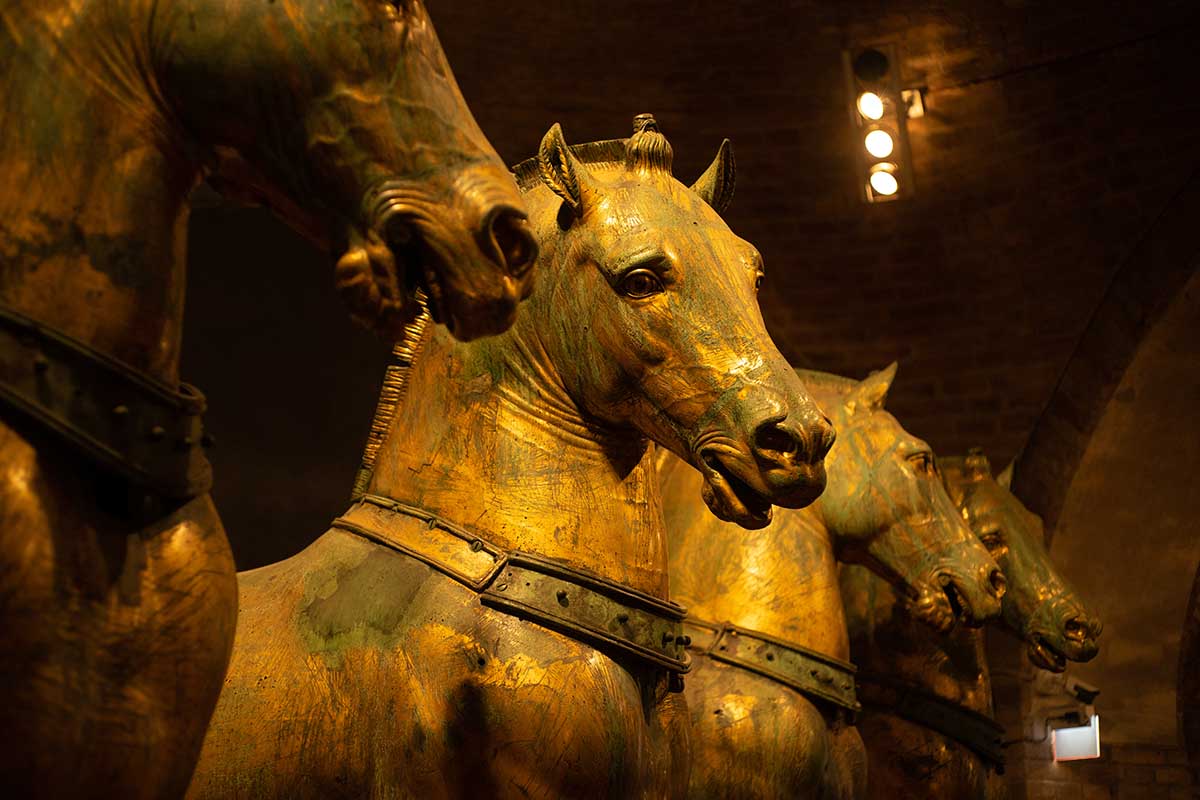
Before heading down, I stepped outside to the Loggia dei Cavalli, the balcony overlooking the square. The rain was a drizzle as I stood at the foot of the replica horses, placed in the 1980s here.
Golden Age, Decline & Reinvention
In the wake of the Fourth Crusade, Venice’s star just kept rising. They acquired key territories in the east, expanded to the Italian mainland and bested the Genoese in a protracted war (in which they at one point came within a hair of losing control of their own lagoon). The Ottomans proved greater, longer rivals, though latter’s decline would shortly shadow the Venetians’ in the 17th century, thanks to long, costly wars and westward shifting trade. When La Serenissima finally fell in 1797, it was under the boot of Napoleon, who stole their prized horses, shipping them off to Paris. Soon after Waterloo, they came back to Venice, while Paris replaced their short-lived loot with replicas of their own, still capping the Arc du Carrousel, a stone’s throw west of the Louvre.
But the Republic was dead. From then on, its haunting beauty would serve in the same way that it still does today: as a destination. Since the very first waves of Grand Tourists, Venice has welcomed its share of astonished guests, long Venice’s lifeblood (and, according to some, its bane). 2024 saw over 5 million tourist arrivals, with a marked increase of Americans making the trip, boosting prices. To curb the excess, the city has introduced a cruise ship ban (2021) and a day-tripper fee (2024).
But sloshing through much of the city over the next two days, I hardly noticed the infamous crowds. Blending in, I was completely won over.
I also left convinced that skipping a visit to Saint Mark’s Cathedral—the Basilica di San Marco, among the most grand and evocative on earth—should be counted as a punishable offense. While there, go upstairs. But check out the forecast first, and perhaps even splurge on a respectable umbrella.
